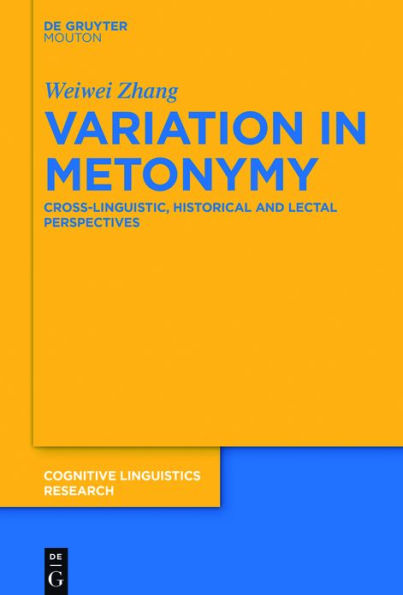Table of Contents
Introduction 1
Part 1 Theoretical Preliminary
1 Demarcation and variability of metonymy 7
1.1 Conceptual metonymy 7
1.1.1 Definition/demarcation of metonymy 7
1.1.2 Internal typology of metonymy 20
1.1.3 The conventionalization of metonymy 26
1.2 Metonymy: A variationist CL view 27
1.2.1 The cross-linguistic dimension 27
1.2.2 The historical dimension 31
1.2.3 The lectal dimension 33
1.3 Metonymy: Semasiology and onomasiology 35
1.3.1 The semasiological perspective 36
1.3.2 The onomasiological perspective 37
1.4 The methodological state of the art in metonymy research 40
1.4.1 Why CL research needs an empirical approach 41
1.4.2 Overview of methods in CL metonymy research 42
1.5 Summary: Research gaps 46
2 Metonymy in expressions 47
2.1 Models for analyzing figurative composite expressions 48
2.1.1 Compositionality and analyzability 48
2.1.2 Fauconnier and Turner's blending model 50
2.1.3 Senczes's analysis of noun-noun compounds 53
2.1.4 Geeraerts's prismatic model 56
2.2 Metonymic mappings in Chinese expressions 63
2.2.1 Bringing the prismatic model to Chinese metonymic expressions 63
2.2.2 Various paths of metonymy in Chinese expressions 65
2.3 Some criteria for classification 79
2.3.1 Global metonymy versus parallel local metonymies 79
2.3.2 Internal metonymy versus external metonymy 85
2.3.3 Differentiation between alternative prismatic structures 89
2.4 Summary 92
Part 2 Case Studies
3 The cross-linguistic perspective; Metonymies for PERSON 97
3.1 Methodology 98
3.1.1 The Chinese data resources 98
3.1.2 The English data resource 110
3.1.3 Summary of the methodology 119
3.2 Results 121
3.2.1 Variation in metonymic patterns for PERSON in general 121
3.2.2 Variation in metonymic patterns for different kinds of person 127
3.2.3 Variation in metonymic sources of a particular pattern 137
3.3 Discussion 152
3.3.1 Paragons in Chinese culture 153
3.3.2 The carriage-clothing system in Chinese culture 155
3.3.3 The residence system in Chinese culture 168
3.3.4 Culture-bound conceptualizations of body parts 172
3.3.5 Collectivism versus individualism 176
3.3.6 Section summary 178
3.4 Summary 179
4 The diachronic perspective: Metonymies for WOMAN 181
4.1 Methodology 182
4.1.1 The Corpus of Historical Chinese 182
4.1.2 Metonymy identification 185
4.1.3 Metonymy quantification and analysis 188
4.2 Diachronic variation in metonymic patterns 190
4.2.1 Exploring and visualizing the data 191
4.2.2 Targets with relatively stable diachronic variation 206
4.2.3 Targets with a dominant trend in diachronic variation 230
4.2.4 Targets with highly fluctuating diachronic variation 242
4.2.5 Section summary 263
4.3 Interactions with stylistic variation 265
4.3.1 Stylistic variation in metonymic patterns 267
4.3.2 Introduction of new metonymic items 276
4.3.3 Section summary 281
4.4 Summary 284
5 The lectal perspective: Metonymies for GOVERNMENT 286
5.1 Methodology 287
5.1.1 Data collection 287
5.1.2 The variables 298
5.1.3 The mixed-effects logistic regression model 303
5.2 The general regression model for GOVERNMENT 308
5.2.1 General impact of the predictors 309
5.2.2 Specific influence of fixed effects 310
5.2.3 The random-effect variable of verbs 313
5.3 The separate regression model for MAINLAND CHINESE GOVERNMENT 315
5.3.1 The separate mixed-effects model 316
5.3.2 The lectal variation between Mainland and Taiwan Chinese 317
5.4 Summary 319
Conclusion 322
Main findings and contributions 322
Limitations and further directions 326
References 329
Appendix 351
A Chinese/English metonymic mapping datasets 351
B Distributions of main patterns for specific targets 352
C Distributions of sources under a particular pattern for specific targets 357
D References for meaning identification in the corpus 361
E Classification of source/target concepts in Case 2 361
F Contributions of patterns for interpreting the MDS dimensions 362
Index 365



